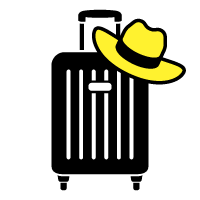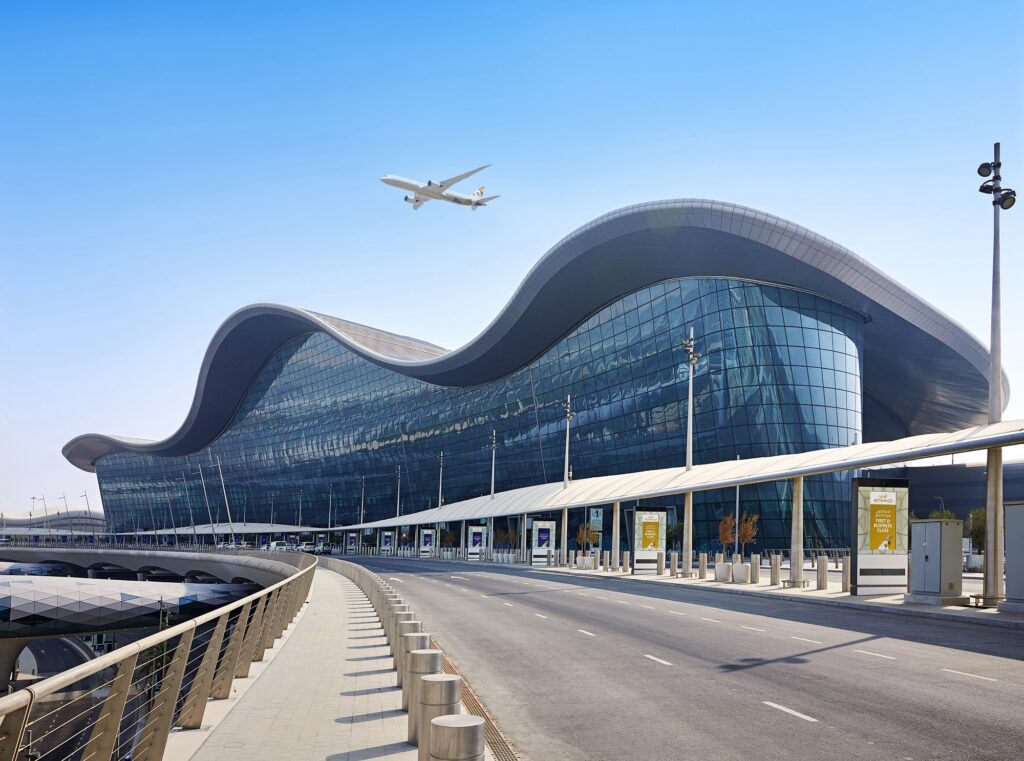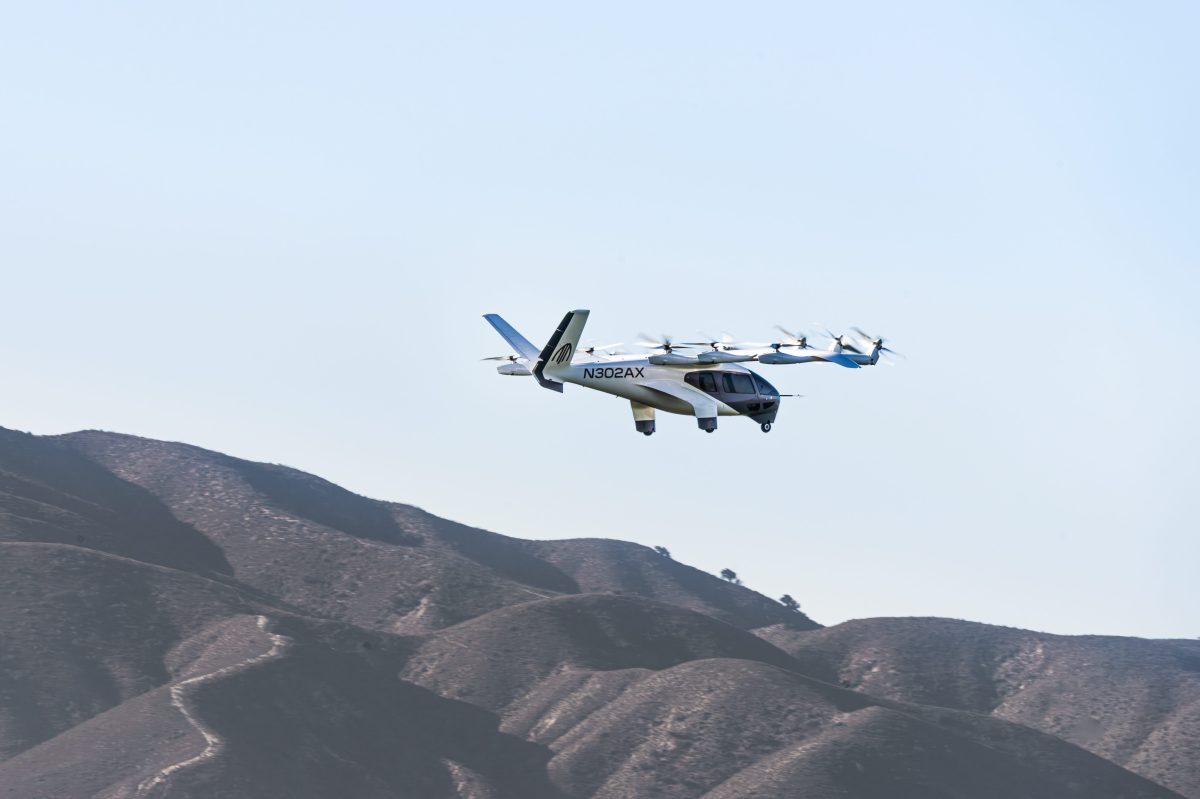Can Etihad Double in Size by 2030? Commercial Chief Arik De Exclusive Interview

Skift Take

Leaders of Travel: Skift C-Suite Series
What are the top trends impacting hotels, airlines, and online bookings? We speak to the executives shaping the future of travel.You wouldn’t know it today, but there was a time when Etihad Airways eyed global domination. Aiming to mirror massive growth at Dubai-based Emirates (now the world’s largest international airline), the UAE’s two largest carriers were locked in a big-money battle for supremacy.
Before the pandemic turned the industry upside down, Etihad endured a bruising 2010s. A sharp recalibration of the business and subsequent down-sizing left many wondering about the company’s place in a crowded market.
Under fresh leadership and with a sense of renewed purpose, the airline is recording some of its strongest results in years. For the latest in our Leaders of Travel: Skift C-Suite Series, Skift met Arik De, Chief Revenue and Commercial Officer at Etihad Airways to learn more about the company’s ambitious growth strategy.
Growth, But Not at Any Cost
Skift: There’s plenty of industry chatter about Etihad’s ‘Journey 2030’ plan and the ambitious targets attached to it. Can you remind us of the key goals and give us a status report on the company’s progress?
Arik De: The top line is we're actually ahead of time. Roughly speaking, we’re probably around 10% ahead of what we thought we would be this year and the overall trend looks pretty healthy. We started this broad transformation a year and a half ago. With Journey 2030 we will go from roughly 96 aircraft today to around 170. We're going to end 2024 having carried around 17 million guests. By 2030 this will probably be around 35 million. We currently fly to around 80 destinations, we’ll probably end Journey 2030 with between 140 and 150.
The plan has a lot of flexibility in it. I think we learned a lot of lessons from the past. We are very cautious in making sure that whatever we do makes sense from a financial perspective, and have a fleet plan that backs up this flexibility.
How have the company’s perspectives changed since the pandemic?
Coming out of Covid, one of the first things we needed to do was look at ourselves in the mirror and understand why our historical performance from a revenue perspective was not delivering. It was great to be face-to-face with ourselves in the mirror and identify the things we needed to fix. We did that very quickly. Having done that, our revenue recovery rate is among the best in the world.
It’s also important to highlight what we did right in the past. We built an amazing brand that globally speaking gave us a leg up. We had a great foundation to build this nice castle, but some of the fundamental aviation geeky stuff underneath that was not as developed.
Readers may recall Etihad’s 2010s heyday with huge growth and truly global ambitions - a strategy that ultimately ran into challenges. How are you ensuring that your current plan is sustainable for the long-term?
We need to not be driven by ego. We need to be driven by numbers and a solid understanding of financial performance. We are part of ADQ, which is one of the three massive sovereign funds. ADQ’s mandate for us is to be profitable and deliver an extraordinary customer service.
As I joke with my peers, I don't get paid my bonus if I don't deliver my number. So when you have the management team being motivated by that economic incentive, it's a very different ballgame. I don't look at the challenges we face as necessarily obstacles or hurdles to growth.
Late last year your new home at Zayed International Airport Terminal A opened for business. How transformational has this been to your operation?
I don't think our Journey 2030 would be a journey if we didn't have the new airport. It's as simple as that. The old airport served a purpose, but it didn't allow us to really move towards our vision. The new airport is amazing in terms of NPS [net promoter score]. Our NPS has gone through the roof with the new airport. From an operations perspective we are moving into 45-minute connectivity [for passengers transferring flights] in our hub airport, which allows us to be best in class and best in the region.

The Power of U.S. Preclearance
One of Abu Dhabi’s key selling points over regional rivals is the U.S. Preclearance facility, allowing travelers to arrive in the United States as domestic passengers. Will we see this being further leveraged by Etihad as a differentiator?
The current facility is not great from a customer journey perspective. You arrive in this brand-new amazing terminal and are then bussed to the old one. What I'm really excited about is likely by November - the date is still to be confirmed - the new Preclearance facility featuring a business class and first class lounge will go live.
When it’s fully integrated, all of our [U.S.-bound] flights will be precleared in Abu Dhabi. For example, we'll be announcing 50-minute connections with JetBlue in Boston, which no airline can provide in this part of the world. We're very excited about it.
Will the new site allow you to shorten minimum transfer times for U.S.-bound passengers?
We will go live at 90 minutes [minimum connection time between flights] and aim to progressively bring that down. We're not going to put a product out there that fails. It's not good for our brand. We are going conservatively at 90 minutes. The biggest thing that we need to do is make sure we market it correctly and make sure we educate our consumers that this exists.
Historically, I don't think we've done enough to promote preclearance and educate our guests about the benefits. Going forward, we have a whole media plan, a marketing plan and a brand plan to make sure we do that. The brand plan is part of a huge brand refresh for the airline that leverages our iconic livery to greater detail.
An improved U.S. preclearance product sounds like a win-win. With your upcoming marketing efforts, how worried are you that it might prove too popular? Do you have the infrastructure and people-power to deliver this at scale?
It’s a great question. We're doing two things. First of all, the facility is built recognizing our plans and we work very closely with the stakeholders in the ecosystem. Secondly, we are creating a multi-bank [aircraft departures and arrivals] structure that allows us to be more effective. For example, we currently have a very well-defined 2am bank that goes to North America. We're now having a second 9am bank. So our growth will not be centered around one bank, which may have the issues like you mentioned, but having multiple that will allow us to be able to capitalize on the growth.
We've also invested a lot in our Indian network. We're going to be pretty much the fastest way to get from the Indian Subcontinent into North America. We already have four banks for our Indian flights and they’re designed in such a way that further growth will take preclearance into account.
Fending Off Low-Cost Rivals
How can Etihad co-exist with rapidly growing low-cost carriers across the region, and specifically in Abu Dhabi?
To be honest, I think it makes us stronger. Complacency in any industry is the worst thing that can happen. As long as the playing field is level, I'm totally on with competition - my view is bring it on. You need to be nimble, you need to be fast. [Competition] has allowed us to be more nimble than the rest. I'll give you a statistic that's crazy. In terms of ultra-low cost competition, in Dubai it's 6%, in Doha it's 5%. For us it's 30%. Despite that, we’ve grown capacity by 40% and we’ve grown revenue and unit revenue. We've done it because we know already that the world will have competition. The new Etihad is bold and will hold its own in its home hub.
There is intense speculation regarding a possible IPO of Etihad. Is the company IPO ready?
We are an airline that is in an exciting phase of its journey, I think that we need to be IPO ready and we are IPO ready. However, it's not our call. It's really up to shareholders when the timing is right, if that's something they want to do.
The A380 is a Profit Machine
The Airbus A380 made a surprise return to the Etihad fleet. How is the super jumbo performing for you in the post-pandemic environment?
We had no intention of bringing the A380 back, but then we were getting aircraft [delivery] delays all over the place. These planes are parked, they're paid off, so why wouldn't we bring them back? We made a business case and bought four of them back into service. They have far exceeded profitability targets. Now we're bringing five, six back, and maybe more.
Speaking at the Skift Global Forum last week, Andrew Nocella, United Airlines' CCO was hugely excited about the company’s rollout of Starlink Wi-Fi. Will we be seeing upgrades to the onboard connectivity experience for Etihad passengers?
Absolutely. You will be seeing a lot more in the next six months in terms of our product, in terms of our announcements, including in-flight connectivity. We will have industry-leading Wi-Fi.
Etihad as a Tech Incubator
Can you offer any examples of what changes have been implemented behind the scenes to support your new strategy?
A lot of our focus is investing in best-in-class people. That's number one. Our commercial team used to have 15 nationalities, now we’ve 88 different nationalities of great talent sourced from the top airlines around the world.
We’ve also really focused on cutting-edge AI technology and new tools. We're at the sweet spot of 90 aircraft with a lot of widebodies. We're not so big that new technology can't be experimented without making lots of drama. We’re also not so small that we're not a good sample size. We're in a nice incubator place where we have a lot of people come in to try their technology and see what works to help build an ecosystem in the revenue and commercial division.
Stopover programs are very popular for some of your rivals. What insights can you share regarding Etihad’s offering?
The last time I saw the numbers, it was around 240% growth year-on-year. We’re performing better than expected thanks to two or three things happening. First, there’s been a lot of investment in the technology on our website. When I started two years ago we had a website that looked like it was from the 1960s. If the internet existed in the 1960s that’s what it would look like. Today, I'll be honest, we're at 2015. We’re not quite there yet. However, towards the end of the year we’re launching a massive new website. We also have a new mobile app that's going live around Q1 2025. At that point we’ll be 2030 ready!
The second factor driving growth in the stopover program is that Abu Dhabi is increasingly being discovered as an amazing place to visit. Guests who take stopovers with us are 90% more likely to visit Abu Dhabi as a destination within the next 12 months, which is a nice place for us to be.
And finally, what’s occupying a lot of your bandwidth at the moment?
What keeps us really focused is how do we keep scaling up our organization in a way that allows us to maintain this momentum? I think we've proved over the last two years that we are very adept in adjusting to demand. We are adept at capitalizing on market environments, in fact, seizing market environments.
The question that keeps me awake is how do you scale this up and keep the momentum? How do you get 200 cabin crew joining every week in a way that maintains our service ethos? How do you keep bringing talent in at headquarters that understands the vision, understands the journey we are on? I think those are areas that keep us more occupied than the external environment.
This interview was edited for clarity and length. Read more from our Leaders of Travel: Skift C-Suite Series here and read an extended version in the September 30 edition of Airline Weekly.
Airlines Sector Stock Index Performance Year-to-Date
What am I looking at? The performance of airline sector stocks within the ST200. The index includes companies publicly traded across global markets including network carriers, low-cost carriers, and other related companies.
The Skift Travel 200 (ST200) combines the financial performance of nearly 200 travel companies worth more than a trillion dollars into a single number. See more airlines sector financial performance.





